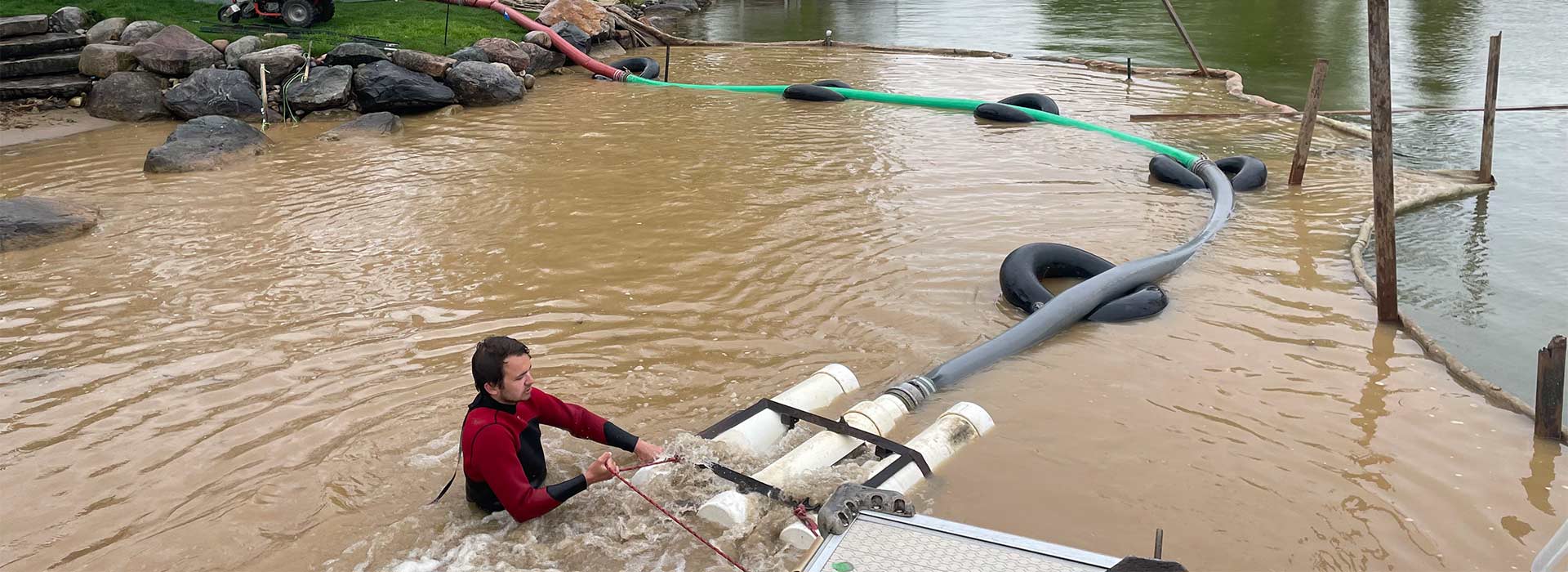
F.A.Q.
Frequently Asked Questions About Beach Installations & Maintenance
What can I expect the depth of water to be after completion?
- Michigan’s EGLE (formerly MDEQ) recognizes the depth of water being from the top of the muck to the level of the water.
- During our beach installation service, a 6” depth of sand is installed over the fabric, the weight will immediately begin to compress the muck and further stabilize the beach. This compression process continues for approximately one year.
- The more significant the depth of the muck, the more it will compress.
- Normal installations reduce water depth by 4” – 6”.
Is dredging a better solution?
Dredging is the removal of organic material and weeds from the lake bottom to provide depth. Although extremely costly, permitted dredging is the standard solution for a very large area of a lake.
In small areas or individual sites, many problems arise the prohibit dredging:
- Obtaining permission from EGLE
- Usually too costly
- Usually too messy and inaccessible on small sites
- Though sand exists under the muck, the sand always becomes contaminated through the dredging process.
- Dredging spoils either have to be deposited on the site or trucked off-site. Both are very costly.
- Increasing the depth in a small area increases the probability that the area will immediately begin to fill in from the shallower adjacent areas that were not dredged.
- Mother Nature, wind and boat traffic will naturally move silt and debris into this unnatural hole in the lake bottom, which in a few years will be as bad if not worse that previously.
- It is a temporary solution more than a permanent one.
Will the sand stay in place?
Sand erosion occurs primarily at the shoreline or in shallow water. Wave impact will not affect the sand beyond a 2’ depth. Only negligent use of a watercraft will erode sand in the deeper areas. Depending on your location on the lake, especially in regard to boat traffic, sand loss may never occur.
Methods to prevent sand loss:
- Install plastic retention tubing on the edge of the beach in the shallow area.
- Use a sand/pea stone mixture that is more resistant to erosion than sand alone.
For more detailed sand information, check out our full guide on how to choose the best beach sand for your project.
After the beach is installed, how do I maintain it?
There are two main problems to contend with:
- The influx of silt and weeds that may settle on your beach, and
- The erosion or loss of sand due to wave action
Silt and weeds easily become suspended in the water floating to wherever the current sends them. Therefore, any activity on your beach will once again suspend the silt and most weeds in the water. The idea is to disturb the silt on windy days or when wave action is present to carry the silt away. This is why the beach is purposely constructed higher than the surrounding lake bottom so that this cleansing process will happen naturally. Sand, which is a heavy-media, does not move readily. Silt on the other hand, will naturally move from a higher to a lower spot with marginal current. Transplantation weeds will only encroach on your beach from the lack of use.
Basic recommended maintenance procedures:
- Use your beach – constant activity will keep the silt agitated and constantly moving.
- Annually, or as needed, rake your beach with a large landscape rake that has at least a 5 lb. weight attached to the bottom of the handle. This allows you to drag it without having to apply pressure.
- Create water movement (ask us for suggestions).
- Re-plumb your irrigation pump at the lake to be used as a jetting tool.
- Contact us and schedule to have TT&C clean your beach annually.
